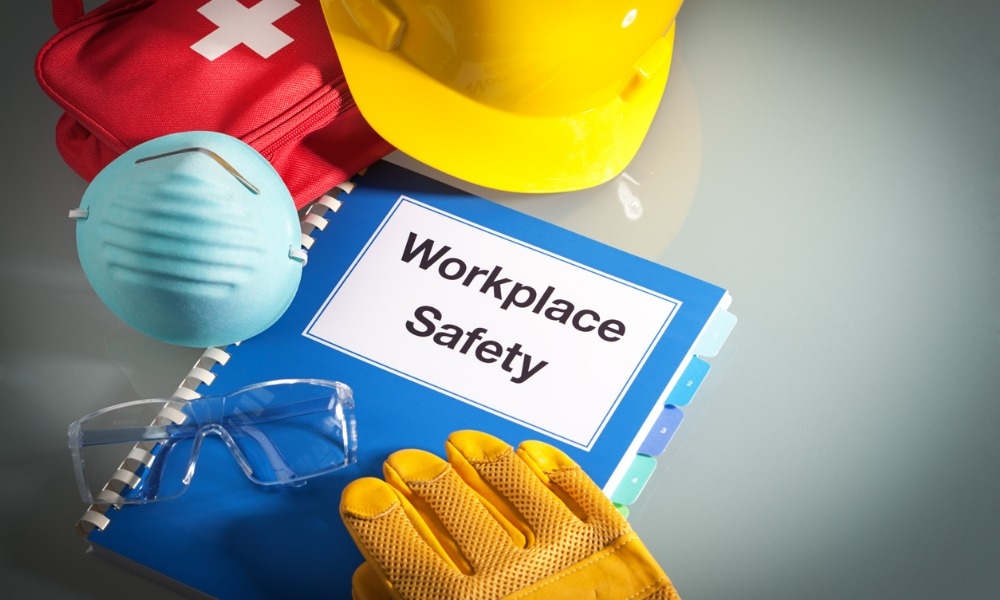A look back at how workplace safety changed in the 20th century

Many say that modern Health & Safety started around the turn of the 20th century. This was when worker's compensation started becoming something of interest in North America. Some point to the Triangle Shirtwaist Factory fire in New York City in March 1911 as the catalyst for widespread labor reforms. It also gave rise to the American Society of Safety Professionals.
By the title of this article, you might think it is about HW Heinrich. It is not. It is about someone who was a pioneer in the early days of what we now know as modern health and safety. Someone who had an unwavering and unflinching commitment to improving workplaces and people's working lives in the early 20th century.
When talking about pioneers, we must look back and see where the modern safety movement came from. It actually started with the issues of child labor in factories. That was an issue first in the United Kingdom and subsequently in the United States. Long working hours and child labor were seen increasingly by society as an issue that needed to be addressed.
It is no surprise that women were at the forefront of this movement. Many of these were working women or even affluent ones. One of the real pioneers in what we know today as Occupational Health & Safety was a young lawyer named Crystal Eastman. Her participation in the Pittsburgh Survey sponsored by the Russell Sage Foundation is an iconic work.
The Pittsburgh Survey was an ambitious survey undertaken in Pittsburgh from 1907 to 1908. It was primarily a sociological study of Pittsburgh as a typical industrial city that saw immigrants pouring in from Europe and being hired to work in the steelworks and mines around Pittsburgh. There were high injury and fatality rates in the industrial city of Pittsburgh in those days. The survey looked at tradespeople, steelworkers, households in Pittsburgh, and even their earnings. The study results were published in 1909 through 1914 in six volumes. Volume 2 Work – Accidents and the Law was authored by Crystal Eastman and published in 1910. It looked at working and living conditions to understand the underlying causes of "work-accidents."
In 1907, Crystal Eastman had a Master's degree in sociology from Columbia and was a fresh graduate of the New York University Law school, placing second in her class. Her job with the Russell Sage Foundation at age 26 was her first.
Her work in the Pittsburgh Survey was impressive and insightful. She found some of the same things we today would recognize. She quoted one businessman.
"Well, I've been in this business fifteen years and I can tell you one thing right now, 95 per cent of our accidents are due to the carelessness of the man who gets hurt. Why, you simply wouldn't believe the things they'll do. For instance, I remember a man,"
She refused to believe that almost every incident or death was due to the carelessness of the workers or that it was their fault. She delved into the underlying issues that she saw as the real causes of these incidents or fatalities. She wrote:
"The only way is to make the lives and limbs of his employees as important to an employer as the output."
Her words still ring true over 110 years later. Crystal Eastman was doing more than pointing out the problems. She was challenging assumptions and looking for positive ways for social reform and the improvement of workplace safety. She outlined what she thought were the conditions causing these work – accidents.
"the chief preventable conditions from which work-accidents result are:
- Lack of provision for safety in construction.
- Long hours of work.
- Too great speed maintained in many lines of work.
- Inadequate plant inspection.
- Failure to remedy known defects.
- Inadequate warning and signal systems.
- Inadequate instruction and direction of ignorant workers."
Anyone involved in the practice of safety would recognize this list today. Volume 2 of the Pittsburgh Survey runs 466 pages. It covers workplace accident causes, economic costs, and employer liability. It is a first and seminal comprehensive study of workplace health and safety in North America.
Crystal Eastman believed that workplace accidents were caused and that they could be prevented. She even identified that the design of the workplace itself was important in ensuring worker safety.
If you're not impressed yet, consider that she did all this before she was 30. Her work impressed the Governor of New York that he appointed her to chair a new commission on employer liability. Her commission helped draft the state’s first worker's compensation law introduced in 1910.
She continued her work, even publishing the Three Essentials For Accident Prevention in 1911, shortly after the triangle shirtwaist fire. She identified the three essentials as something we would recognize today.
- Information. Gathering information about incidents that occur.
- Enforcement of accident prevention laws. Government enforcement of accident prevention laws.
- Worker's compensation. Placing some liability for workplace accidents on the employer
Crystal Eastman went on to a remarkable career, working with U.S. Commission on Industrial Relations and advocating workplace safety. She accomplished much working with the government, businesses, and labor unions to change how workplace incidents were viewed.
Her story is inspiring and impressive, and she is only one of the women driving positive social change in the workplace and within society at the turn of the 20th century.
I often hear women say that health and safety practice has always been full of men. 112 years ago, women were at the forefront of workplace health and safety and successfully pushing for sweeping reforms across the United States.
Perhaps it is because they were women that their accomplishments faded over time. Failing to recognize and honor their accomplishments and contributions is long overdue for a correction.
Before you think of some other pioneers like Heinrich or Bird. We should realize that a young lawyer named Eastman did it first and did it better.






